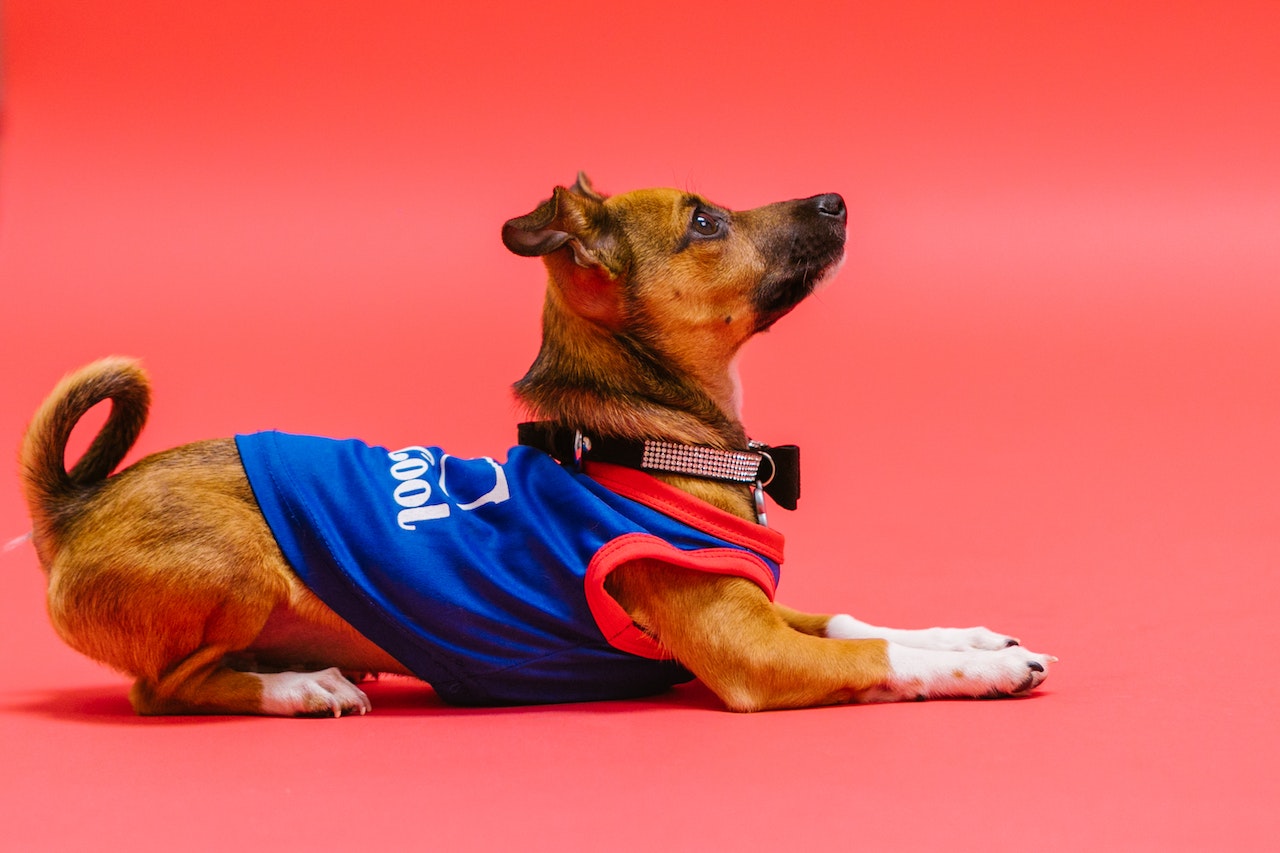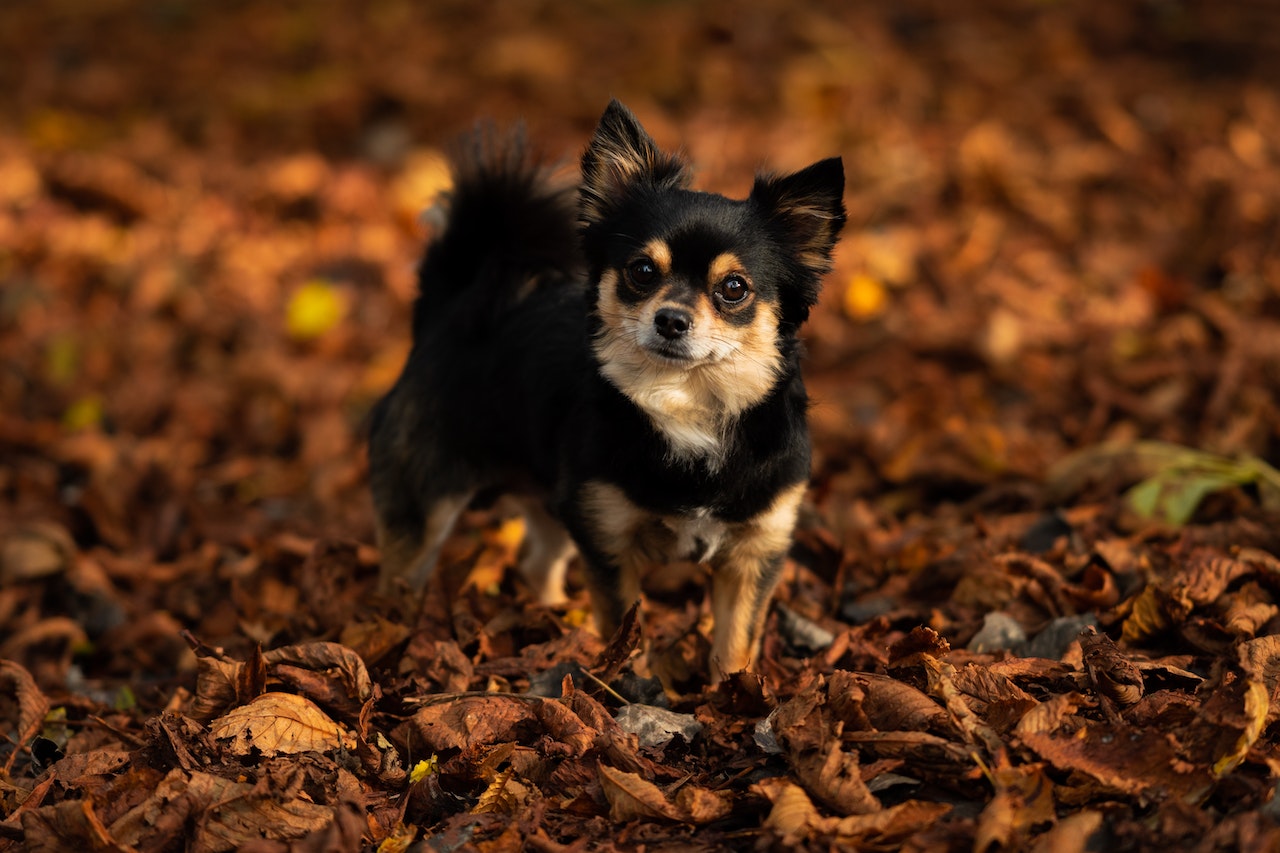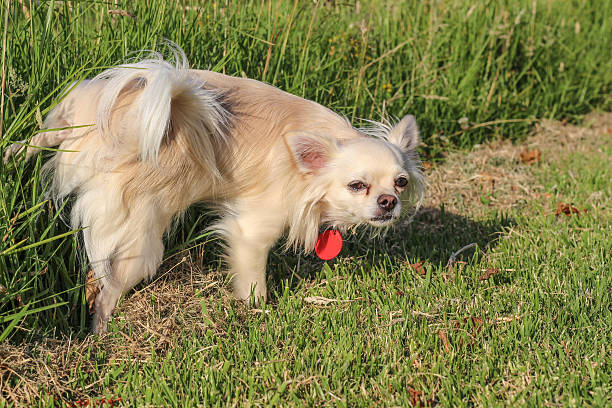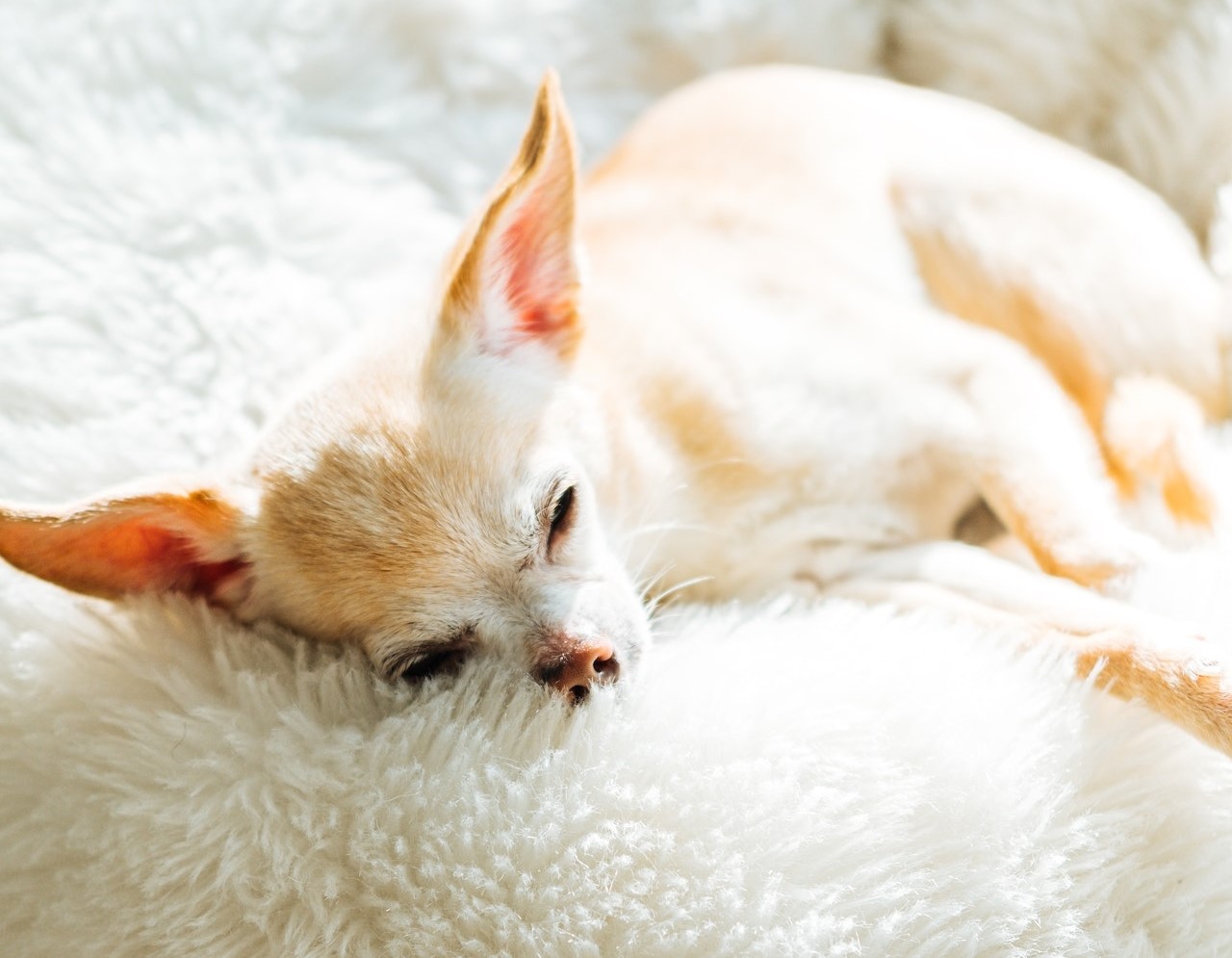Do you want to know the rarest Chihuahua color and patterns? Chihuahuas have a wide range of coat colors and patterns. The official American Kennel Club standards allow for any color and design. Color and pattern preferences abound among breeders and Chihuahua fans, and every color has a Chihuahua. However, some of them may be difficult to locate. These are the most unusual hues in a Chihuahua from head to toe.
History of Chihuahuas
The Chihuahua breed originated from ancient Mexico and is one of the country’s oldest canine breeds. Most people think the chihuahua dog originated in Mayan times when Chis descended from Techichi. Techichis were a Mayan dog breed that was characterized as being exceptionally small.
The Toltecs subjugated the Mayans, and Toltecs are said to have been the first to domesticate Techichi and bring the dogs into the house as pets. The Techichis were also employed for religious reasons, sustenance, and companionship by the Toltecs; some felt the dogs were holy. Techichis has been represented in ancient Toltec, Mayan, and Aztec literature and artwork discovered in tombs and pyramids.
Techichi dogs were discovered in the Mexican state of chihuahua in 1850 amid historic remains constructed by Emperor Montezuma. It is thought that when explorers arrived in pursuit of a new planet, the Techichi mated with a canine breed brought by the adventurers. This gave rise to the chihuahua we know today.
Coat Of Chihuahua

Genetic and dominant genes govern Chihuahua color combinations. Black, black with tan, chocolate, and chocolate & tan is the primary color genes that underpin all chihuahua hues. Introducing spare color genes which dilute the dominant hue in varied degrees leads to over 29 AKC-recognized chihuahua colors. Because there are few kennel club limitations on chihuahua color, breeders prioritize health above color; thus, there is no uncommon chihuahua color.
The Rarest Chihuahua
✅Brindle
A brindle chihuahua is also a pattern rather than a hue. The brindle isn’t the most uncommon chihuahua, but it, like the merle, is challenging to locate. Brindle is a design that is also known as tiger-striped. Some additional breeds with the brindle pattern are the Great Dane, Boxer, English Mastiff, and Boston terrier, to mention a few.
It’s all in the breeding, once again. Breeding Chihuahuas with the brindle pattern is not always straightforward. I don’t breed Chihuahuas and am unfamiliar with breeding and which genes generate certain colors or patterns. But I am aware that breeding a pure brindle is difficult.
✅Merle
The merle chihuahua is a coat pattern rather than a color. They aren’t the most uncommon chihuahua but are nevertheless difficult to locate. Another reason they are uncommon is that a breeder must be knowledgeable to create a healthy merle. If a breeder doesn’t know how to produce a merle chihuahua ethically, the dog is vulnerable to various health problems.
They may be born deaf or with eye abnormalities such as elevated pressure, ametropia (images that do not focus on the retina), microphthalmia (abnormally tiny or deformed eyes), and colobomas (occurs before birth and missing pieces of tissue in structures that form the eye). The double merle gene may cause problems in the skeletal, cardiac, and reproductive systems.
According to the Chihuahua Club of America, the merle pattern is mostly seen in a blue or chocolate merle. If you are considering purchasing or rescuing a merle chihuahua, be sure they are tested and have a full veterinary checkup.
✅Lavender or Lilac
Chocolate is diluted with lavender or lilac hue. This results in the color “lavender” in Chihuahuas. Lavender is a tough hue to breed since it is difficult to replicate. Even if two purple dogs mate, they may not produce lavender pups. One of their mates must carry the blues’ diluting “d” gene. Because of the purple tinge to the dilute chocolate hue, it is known as lavender or lilac.
✅Pure White
The pure white chihuahua is the most unusual of all colors. Why are pure white Chihuahuas so uncommon? To produce an all-white Chihuahua, two pure-white Chihuahuas must be bred. There will be no black pigmentation on the skin of an all-white Chihuahua. This implies the eyes, nose, and nails would be pale in hue. The ears will be pink as well.
The cream chihuahua is often mistaken for an all-white Chihuahua. On the other hand, a cream chihuahua will have deep, intense black eyes and a black nose. On the other hand, the pure white chihuahua will have bright eyes and a pink nose. This does not imply that they are albino.
The Chihuahua Colors and Patterns

The Chihuahua world is among the most colorful in the canine world. While some kennel groups only recognize a few colors in particular breeds, Chihuahuas accept a real rainbow of hues with open arms. The American Kennel Club (AKC) is unusually relaxed regarding the colors of Chihuahuas, with their breed standard stating simply, “Any color – Solid, marked, or splashed.”
The AKC specifies nine standard colors and patterns in other hues, combinations, and patterns for Chihuahua registration, each with its unique registration number. The Fédération Cynologique Internationale (FCI) and the United Kennel Club (UKC) consider the merle color inappropriate in Chihuahuas.
The chihuahua’s complicated background is undoubtedly responsible for the breed’s vast range of colors and patterns. Whether the chihuahua is derived from the Mexican Techichi or a breed of European dog imported by colonists, it has a fascinating history. Because there are so many different Chihuahua hues to choose from, let’s start with both the most frequent.
🔹Black Chihuahua
It may seem unusual to begin a list of the most frequent colors and patterns by listing one of the most uncommon, but there is a method to my madness! Pure black Chihuahuas are still so uncommon that you’ve probably never seen one. Despite this, black is the genetically dominant color in Chihuahuas; therefore, it is rather common; a few dashes of white or another color frequently accompany it.
Although there are “at most three dominant genes that resulted in solid black,” since they are dominant, they are easier to breed out than genetic mutations, resulting in a pure black Chihuahua is so unusual. Black is a suitable color for short-haired and long-haired Chihuahuas and some bald Chihuahuas, which may be mostly black.
🔹Red Chihuahua
The Pheomelanin pigmentation is essential for such redness in a Chihuahua’s coat and may generate a variety of hues according to the genetic connections of the parents. Some Chihuahuas of all this hue are a deep reddish-brown, nearly mahogany, while others have brilliant red coats with darker hairs.
Because this pigment primarily affects coat color and patterns, not skin tone, many red Chihuahuas possess black paws, noses, or eye rims.
🔹Chocolate Chihuahua
Chocolate is seldom an acceptable hue for dog breeds since it is caused by a weak gene that washes away the black coloring. Fortunately for chocolate Chihuahua owners, the hue is acceptable, even though it is not very popular among breeders.
To be called a bar of real chocolate, a Chihuahua must have a darker coat than those classified as brown or liver, while minor dashes of white or the other color are permissible. Because a dilute gene causes the chocolate hue, these Chihuahuas frequently have brown or beige noses instead of the customary black.
🔹Fawn Chihuahua
When you think of a Chihuahua, the first thing that comes to mind is typically a little, yellowish dog with huge ears. This is because the fawn chihuahua is among the most frequent. Chihuahua has been described as a “small yellow dog” in the past; thus, this hue has characterized the breed for some time.
The fawn chihuahua has caused considerable consternation, with a few mistaking it for a distinctive and separate breed. This might be owing to the prominence of the deer-head chihuahua, which has a V-shaped head compared to the American Kennel Club breed standard’s traditional “apple dome” skull. A fawn Chihuahua’s coloring is similar to that of a newborn deer, or fawn, and should not be mistaken for Bambi.
🔹Cream Chihuahua
Cream Chihuahuas might seem virtually white, but they all have had some red in their coat, giving them a soft apricot tint that gives them their creamy color. Although many cream Chihuahuas have light skin, most have black noses and eye rims.
Because Chihuahuas sometimes change color as they age, a puppy that looks pure white may have a beige tint as it grows older, which might be frustrating for a breeder hoping to make the uncommon but eye-catching white chihuahua.
🔹Blue Chihuahua
Though blue is a fairly common colors and patterns in certain dog breeds, it is quite unusual in Chihuahuas. A blue Chihuahua puppy can only be bred from two parents with the same genetic defect diluting its black color.
Breeding for a genetic abnormality is usually seen as immoral since it decreases the gene pool, perhaps leading to abnormalities. Even this, blue Chihuahua pups are so popular that breeders may charge up to $10,000 for a little blue puppy.
🔹Silver Chihuahua
Silver, like blue in Chihuahuas, results from the dominant dilution gene. Some contend that “the silver Chihuahua isn’t truly silver at all” and that their “metallic look” is a blend of gray and white hairs.
Despite this, silver is listed as a permitted Chihuahua color. It even comes with its registration number, implying that breeders either think it exists or choose to spice up a grey coat by giving it the more exotic moniker of silver.
🔹Gold Chihuahua
Gold, like red, is created by red Pheomelanin pigment. Gold Chihuahuas, which range in hue from nearly creamy to a golden brown, is not the same as golden Chihuahuas, which are a bizarre hybrid between the Golden Retriever and the chihuahua. A gold Chihuahua’s nose may be black or liver-colored, depending on the kind of Eumelanin pigment.
🔹White Chihuahua
White Chihuahuas are possibly the most difficult to find. An albino Chihuahua is not the same as a white one, yet they both have a loss of pigmentation. The white chihuahua lacks melanocytes, which provide colors and patterns to the coat, but retains the eumelanin required for noses, black eyes, and paws. Yet, they may have pink noses in certain cases, like Demi Moore’s Chihuahua, Vida.
🔹Chocolate Blue Chihuahua
I was hesitant to include this hue since breeders do not commonly recognize it. However, since the American Kennel Club recognizes it colors and patterns, I chose to include it.
To obtain a blue chocolate pup, your parents must have the diluted gene for black pigment – which produces the blue color – and the ‘b’ allele, which causes the black pigment to look brown. I’m not a geneticist, so I’m not sure whether that mixture is even conceivable, but if the AKC says it is, I suppose we’ll rely on their word for it.
Color Patterns of the Chihuahua

When it comes to colors and patterns, Chihuahuas have such a diverse bag that all these nine solid hues are only the beginning. Chihuahuas with two distinct colors in their coats were generally highly stunning, so much so that throughout the 1990s, pop diva Madonna was often spotted with a small black and tan Chihuahua.
Let’s look at some of the most popular and gaze color combinations seen on the Chihuahua catwalk in the year.
🔸Tan and Black Chihuahua
Although they’re not widely available, Tan and black Chihuahuas are some of my favorites. A puppy must have “a double non-black allele in the K locus and… at least one tan-point allele within Agouti locus” to obtain the tan markings on the paws and chest.
Many black and brown Chihuahuas have an occasional white marking, most typically on the chest. These Chihuahuas are called “Mini Dobies” since their coloration is similar to a Doberman.
🔸Chocolate and Tan Chihuahua
Although chocolate isn’t a particularly unusual hue in Chihuahuas, its mixture of chocolate with some other colors and patterns, like tan, is. To have this color combination, a puppy must possess the tan-point allele in the Agouti gene and mutations in the B locus.
The end product may be almost magnificent, but since it’s unusual, a chocolate and tan Chihuahua puppy can cost up to $1,500, compared to the more affordable $500 – $1,000 for a more common hue.
🔸Blue and Tan Chihuahua
Another uncommon colors and patterns combination is blue and brown. The chihuahua requires the same alleles as black and tan, except for the dilution gene, which fades the black coloration to blue. The blue areas of the coat may vary from charcoal grey to virtually powder blue, depending on the amount of dilution. Tan color is often seen on the paws, all around the nose, and on the points of the ears.
🔸White and Fawn Chihuahua
Chihuahuas with many coat colors often wear the darker color on top and the lighter color on the breast, face, nose, toes, and belly. This is true with fawn and white Chihuahuas, albeit the two hues may be difficult to differentiate on extremely pale fawn pups.
Fawn and white Depending on their genetic makeup, Chihuahuas may have either a liver or a black nose.
🔸Black and Red Chihuahua
The mixture of black and red is more frequently seen on Rottweilers or German Shepherds, but those Chihuahuas that are fortunate enough to wear it do it with panache. Though comparable to the black and tan combo, the deeper shade of red in the black and red coat allows you to tell the two apart.
🔸Black and Silver Chihuahua
The sharpness of the silver tips distinguishes a black and silver Chihuahua from the crowd. It’s not a popular combination since it necessitates a reduction of the black coloring to cohabit with such a solid black topcoat.
🔸Black and White Chihuahua
Some dog breeds, such as the Border Collie, are virtually invariably black and white, and it’s not unusual in Chihuahuas. Whereas the eumelanin pigmentation is responsible for such black color, the white regions are completely pigment-free.
Although the black and white chihuahua is visually beautiful, he may suffer due to his two-toned coat. According to research, piebald and white dogs are much more likely than other breeds to be born with congenital hearing loss.
Having said that, Wheely Willie, the famed crippled Chihuahua of Long Beach, never exhibited any indications of deafness. Before passing away in 2009, this tiny boy became a spokesperson for persons with physical limitations because of his K-9 Cart.
🔸Chocolate White Chihuahua
This lovely combo resembles a puppy made of milk and white chocolate. This chocolate and the white chihuahua is among the most appealing breeds, with its white paws and chest. The chocolate color is due to a mutation in a black gene, but a lack of pigment cells causes the white patches.
While most chocolate and white pups have some white on them, they may develop a particolored pattern.
🔸Blue and White Chihuahua
Because of the dilution allele that causes the blue coat, some Chihuahuas may only have a splash of white, mostly on the chest. Because blue is an uncommon hue, these multicolored canines are highly sought after, frequently resulting in an exorbitant price tag.
🔸Gold and White Chihuahua
The gold and white chihuahua is another eye-catching combination. It may be mostly gold with a white tip on its tail and paw, or it can be particolored, having white patches all over. Some of the most beautiful gold and white Chihuahuas have “Irish spotting,” meaning they have white on their legs, tails, breasts, neck, and snouts.
🔸Red and White Chihuahua
The chihuahua in red and white resembles a small Irish Setter. Long-haired varieties, whether fully red or mostly white, with such a few red patches, look very well in this color combination. American Kennel Club also mentions silver and white and cream and white as acceptable variants in addition to these color combinations.
Frequently Asked Questions
What Is the lightest color of a chihuahua?
Colors like merle, blues, and chocolate blue are uncommon in Chihuahuas. However, none of them are as prevalent as a pure white Chihuahua. Breeding two white parents are the only method to create a snow-white puppy. A white Chihuahua must not have any black pigmentation on his skin. Consequently, most white Chihuahuas and numerous fawn and cream puppies have golden yellow eyes, a pink or tan snout, and white nails.
What Is the Price of a Chihuahua Puppy?
A Chihuahua puppy costs between $500 to $1,500, based on its color and breed. A dog with champion genes may bring up to $4,000, which is still a drop in the bucket compared to the expense of keeping one of these small beasts.
Which Is the Most Valuable Dog Breed to Own?
According to research, Chihuahuas are the most costly breed of dog to keep, costing their owners more than $117,000 throughout their 12-20-year lifetime. To be sure, it’s not the dog’s fault but the owner’s. Chihuahua owners, research seems, are much more likely to purchase fresh vegetables and meat for their dog’s meal, as well as “a noticeable predilection for pricey jewel collars for their dogs, fancy doggy attire, and custom beds.”
Do Chihuahuas have a lot of barking?
Most Chihuahuas bark often and loudly, which is fortunately not an indication that anything is wrong. If you have a Chihuahua and are concerned about excessive barking or wish to teach them to be less yappy, don’t worry; some training techniques may assist with excessive barking.
Do Chihuahuas lazy dogs?
They’re also lightweight, making them ideal for carrying tiny purses, backpacks, and dog strollers. However, despite their small stature, Chihuahuas are very lively and perky.
What are the weaknesses of Chihuahuas?
Prone to health problems. Chihuahuas, like many purebred puppies, are prone to breed-specific health concerns. Seizures, heart valve illness, and patella luxation are examples of these. If you buy your pup from a breeder, they should examine the health of both parents and the pups as needed.
Why Were Chihuahuas Developed?
People often question, “What are chihuahuas bred for?” since most canines are designed for a certain purpose. Chihuahuas were developed for companionship as well as holy creatures. According to evidence, these canines were famous as a sacrifice for religious rites and rituals. The Aztecs and Toltecs may have thought that these little canines led the soul to the underworld after death, and Techichi dogs were frequently buried with their masters.
Final Thoughts
Having a specially-bred, rare-colored pup is a pleasure and a source of immense enjoyment, but it is not without expense. When looking for just a rare-patterned Chihuahua, stay mindful of any possible drawbacks, such as health difficulties or even the fact that they’re not purebred, if that is a factor in your decision. Any indication of a health problem should prompt a trip to the veterinarian. However, one thing is certain: we adore Chihuahuas. Do you want to know about what is a deer head chihuahua? Click Here!
Here at ILoveChihuahua, we share our personal experiences as owners of this feisty breed. We talk about recommended methods, dog supplies picks, and advice on common Chihuahua problems. Our goal is to promote responsible dog ownership, so there would be fewer Chihuahuas in shelters.


